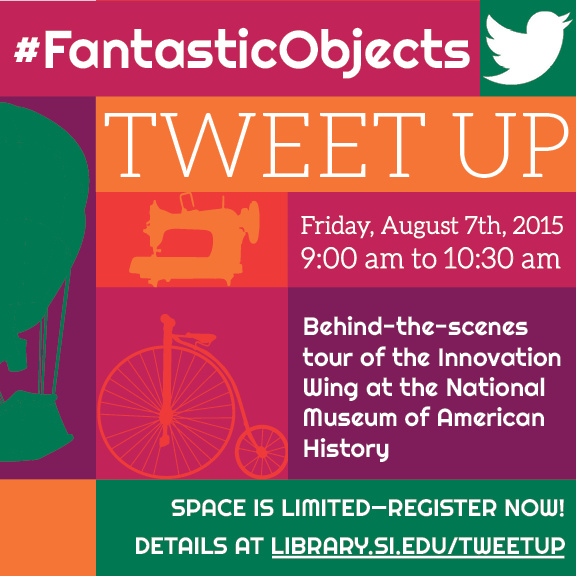The Sailing Club of the Chesapeake, to commemorate the American Bicentennial, invited members of England’s Royal Yachting Association to journey to the Eastern Seaboard for the “No Hard Feelings Cruise.” Sixty-two British sailors took up the offer, and with more than 300 others, embarked on eighty-nine yachts to race and explore the waters of the Chesapeake Bay in 1976.
Tag: National Museum of American History

This post was written by Kirsten van der Veen, co-curator of “Fantastic Worlds.”
When the west wing of the National Museum of American History reopens today, July 1, after extensive renovations, a new Smithsonian Libraries exhibition will be opening with it: Fantastic Worlds: Science and Fiction, 1780-1910. It will be the first exhibition to debut in the newly refurbished Smithsonian Libraries Exhibition Gallery. On display will be some of the very works that exposed an eager and curious public to the wealth of new ideas and inventions of the 19th century (landmarks of scientific discovery, imaginative fictions, popular science, newspaper hoaxes, dime novels, and more). Showcased alongside selected historical artifacts from Smithsonian museum collections, the books on exhibition will trace the impact of the period’s science on the world of fiction.
Last fall, I marked the season for the harvesting of grapes to honor John Adlum, the little-known “Father of American Viticulture.” The origins of the first commercially viable vine in the American wine industry can be traced to the District of Columbia.
Now, with the great interest in Alan Turing, the recent auction sale of this English mathematician’s 56-page notebook for more than a million dollars, and the success of the movie, “The Imitation Game,” let’s look at another (and earlier) computer pioneer genius, Herman Hollerith, and the importance of his Washington invention. Hollerith was, as stated in the title of his principle biography, “The forgotten giant of information processing.” Again, it was the beginning of a huge industry—surprisingly but not at all incidentally—in the nation’s capital.

Today, May 18th is National Bike to Work Day! Did you hop on your velocipede or walking machine for your commute today?
If you missed it, don’t worry. National Bike Month is celebrated throughout the month of May. Our Galaxy of Images has an entire collection of bicycle imagery to get you in the mood!
Here are some of the newest additions to the National Museum of American History Library.



